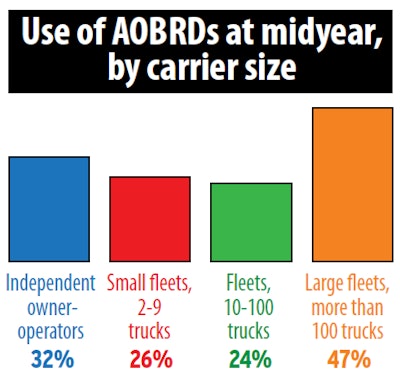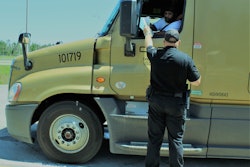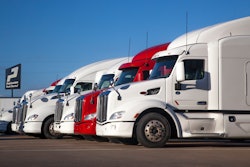 Unlike an AOBRD, an ELD is required to automatically record nondriving activities above 5 mph (yard moves, for instance) on the drive line unless they’re specified otherwise. If you’re contemplating what you’ll do as the Dec. 17 deadline to switch from AOBRD to ELD technology approaches, download a guide to ELD provider options via this link.
Unlike an AOBRD, an ELD is required to automatically record nondriving activities above 5 mph (yard moves, for instance) on the drive line unless they’re specified otherwise. If you’re contemplating what you’ll do as the Dec. 17 deadline to switch from AOBRD to ELD technology approaches, download a guide to ELD provider options via this link.The day of the electronic logging device mandate’s first enforcement deadline, Dec. 18, 2017, was no different than any other day for carriers using technology qualified as an automatic onboard recording device (AOBRD) under the regulations of the Federal Motor Carrier Safety Administration.
The end of the soft enforcement period on April Fool’s Day the following year, too, held no consequence for carriers that had been logging driver hours with AOBRDs in 2017 and before. All along, the most important date for these fleets has been Dec. 17, 2019.
By then, all carriers must use technology that meets the new ELD requirements of Parts 395.20 through 395.38 in FMCSA’s rulebook. That includes detailed specifications that did not exist for AOBRDs.
Many fleets and one-truck owner-operators with authority are delaying the transition. Fewer than half of those using e-log products from Trimble Transportation Mobility, one of the largest telematics and fleet management technology providers, have flipped the switch to update their software, estimates Eric Witty, vice president of product.
That’s roughly the share of survey respondents in the 100-plus truck fleet group who reported they were continuing to use AOBRDs in June. Other fleet sizes show fewer holdouts.
 For most smaller fleets, the AOBRD-to-ELD transition is little more than a date on the calendar. For the largest fleet segment, however, nearly half have work to do before yearend.
For most smaller fleets, the AOBRD-to-ELD transition is little more than a date on the calendar. For the largest fleet segment, however, nearly half have work to do before yearend.Shifting loyalties
Many fleets have legacy systems that will require a discrete software update or hardware upgrade plan to make the transition with their current technology provider. When CCJ and Overdrive surveyed fleets and independent owner-operators with authority in June, 31% of respondents who continued to use AOBRDs noted definitively that they planned to stick with their provider.

Learn more about your ELD options
One of the most important dates for your fleet is December 17, 2019, when all carriers must use technology that meets the new ELD requirements. When Overdrive and CCJ surveyed fleets and independent owner-operators with authority in June, almost half of respondents in the 100-plus truck fleet group reported they were continuing to use AOBRDs.
When you click to download this guide, you’ll find out information on:
- Device types
- Initial and ongoing costs
- Capabilities of each device
Many of those same owner-operators and fleets (43% cumulatively, according to survey results) are using devices that can be run in AOBRD mode and then switched to ELD mode when the grandfather period is over in December. Among providers with such functionality are BigRoad, KeepTruckin and Gorilla Safety.
Only 6 percent of survey respondents planned to go to a different provider. Nearly one in five AOBRD users remained uncertain of their provider plans.
A spokesman with Zonar, which offers a dedicated tablet-type AOBRD with wider functionality that updates to the ELD specification over the air, is encouraging current customers to migrate from AOBRDs “no later than early fall.” That echoes comments from other providers.
Zonar expects an “uptick in business from fleets that aren’t happy with their existing providers’ ability to ensure ELD compliance,” the spokesman added.
J.J. Keller expects the same, says Keller’s Rebecca Brown, an uptick in prospective customer contacts. “The reasons for their interest vary — meeting the coming deadline, the end of a contract, curiosity to see what other systems have to offer, and general dissatisfaction with their current provider.”
That last item could pertain to many customers. Nearly a third of fleet and independent owner-operator respondents to an CCJ/Overdrive survey in late 2018 reported being “not satisfied at all” with their current provider.
Next in this series: Goodbye, AOBRD: Shifting loyalties, yard moves and other challenges








